Cucumber is a common vegetable crop in Russia, which requires an abundance of solar heat for cultivation. Therefore, especially for Siberia, where weather conditions do not pamper local residents, it is necessary to carefully select adapted to regional conditions the best varieties of cucumbersgrowing them in a greenhouse protected from the harsh external environment.
It is important to take into account the specific features and difficulties of cultivating crops in the Siberian climate. When choosing, it is worth being guided by the opinions of experts and reviews of people growing cucumbers in these climatic conditions.
Content
The main requirements for varieties of cucumbers for cultivation in Siberia
Short and often cool summers give a special approach to the cultivation of cucumbers in this vast geographical region. First of all, it is important to choose the right seeds. For cultivation in Siberia, they must undergo relevant state analyzes and be zoned in the northern regions. It is recommended that you purchase them from local seed companies.Most gardeners choose unpretentious varieties. For cultivation on Siberian farms, cucumbers must have immunity to the main diseases of local vegetable crops (in particular, representatives of the pumpkin family). Mandatory qualities of plants:
- cold resistance;
- resistance to possible sharp fluctuations in temperature;
- short growing season.
Varieties should be early ripening or at least mid-ripening. The average period from sowing seeds to the collection of the first Zelentsy is 1.5-2 months. It is desirable that the plants are parthenocarpic. For green pets indoors this is a big plus. They tie fruit without moving pollen on the pistils. Pollination is dispensed with without the participation of bees, and therefore does not depend on bad weather when these insects do not fly.
In conditions of lack of natural light, the shade tolerance of plants is of great importance. Huge advantages - a friendly and energetic emergence of seedlings and, accordingly, the simultaneous maturation. And, of course, the cultivated crop requires high productivity and excellent taste of the fruit.
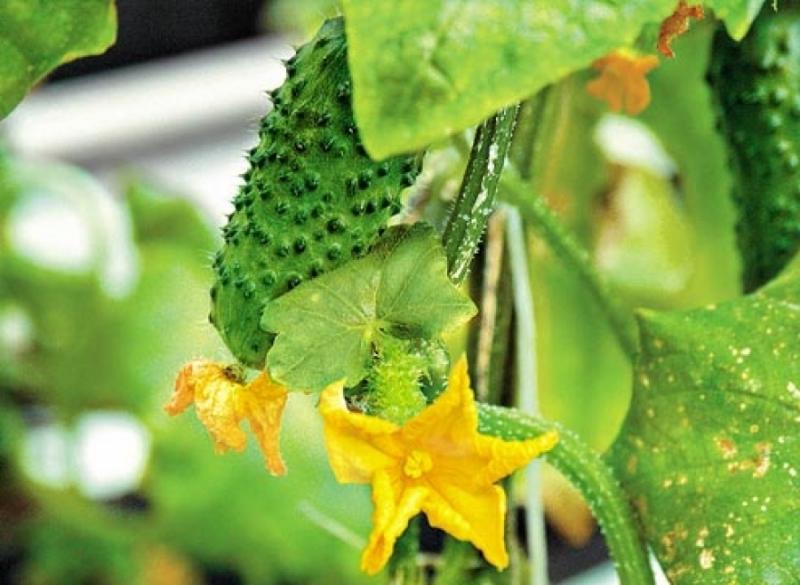 You may be interested in:
You may be interested in:The best varieties of cucumbers for all types of greenhouses in Siberia
Hybrids specially developed for cultivation in harsh climates are most suitable for greenhouses. Some allow you to get a plentiful harvest, others - to enjoy an unusual taste.
The most productive varieties
The weakly-climbing and vigorous Zozulya variety is unpretentious, resistant to root rot, cucumber mosaic and olive spotting. Fruits abundantly in the greenhouse.
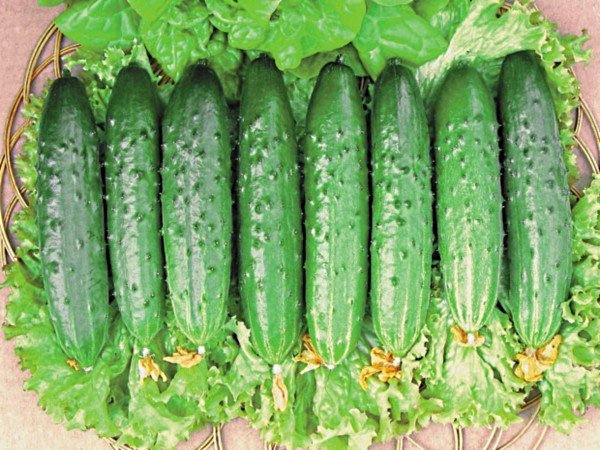
The advantages of the Herman hybrid are early maturity, taste (sweet, without bitterness), presentation, high resistance to mosaics, powdery mildew, fusarium.
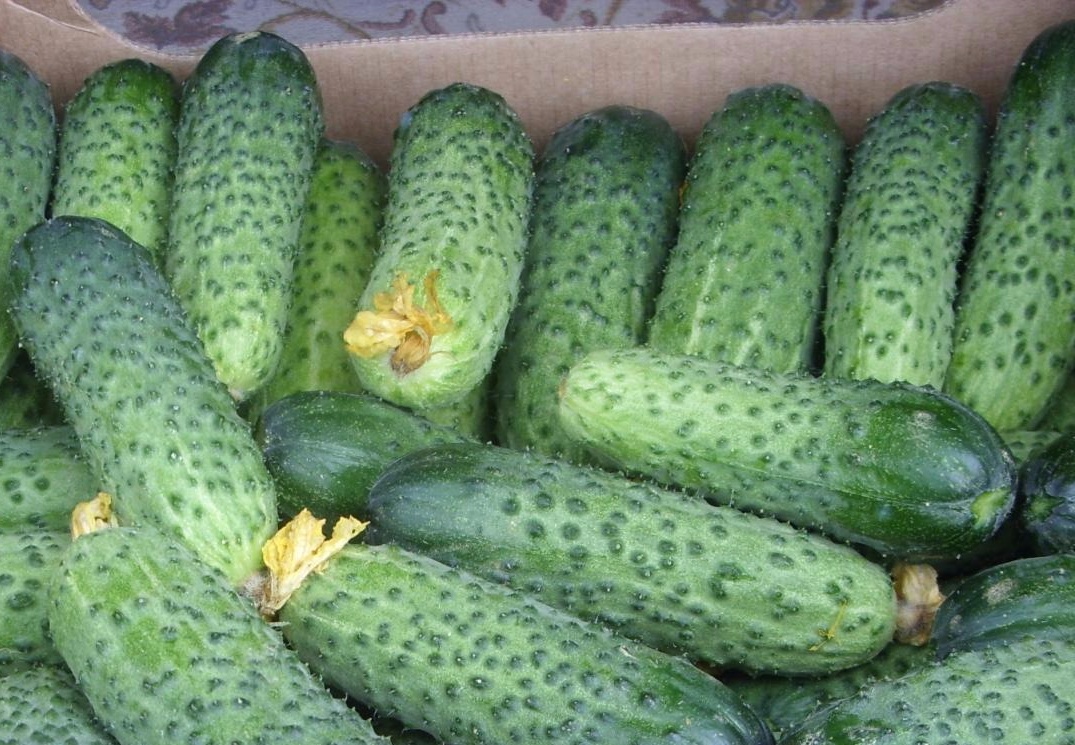
Medium-brained Siberian bouquet adapted to low temperatures, resistant to diseases.
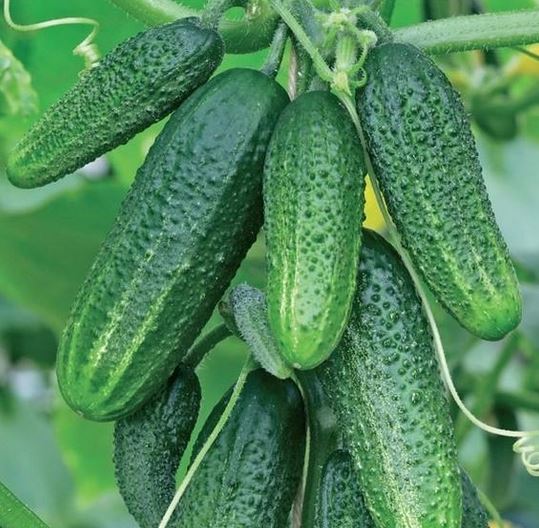
| Grade | Self-pollination | Size in length (cm) | Ripening Duration (days) | Yield (kg per 1 m2) |
|---|---|---|---|---|
| Zozulya | + (partially) | 14-24 | 42-48 | 16-20 |
| Hermann | + | 8-10 | 36-42 | 25 |
| Siberian bouquet | + | 8-10 | 40-45 | Up to 30 |
Alligator Cucumbers
Chinese cucumbers, similar to alligators, differ in length, sweet taste without bitterness, dense and void-free pulp, pleasant aroma (watermelon or melon). This variety is suitable for fresh consumption. Pickling and preserving them is not recommended.
| Grade | Productivity (kg / m2) | Self-pollination | Length (cm) | Ripening period (days) |
|---|---|---|---|---|
| Elizabeth | 18 | + | 20-22 | 50-55 |
| Crocodile Gena | 16 | — | 35-50 | 36-42 |
| Emerald stream | 12 | — | 30-80 | 44-48 |
Features of the varieties:
- Mid-sized, mid-leaf hybrid Elizabeth is famous for its consistently high yield. It has cold resistance and shade tolerance, is not prone to infection with bacteriosis, powdery mildew and olive spotting.
- Srednepletisty, vigorous and shade-resistant Emerald flow withstands temperature drops and bears fruit continuously. Powdery mildew and cladosporiosis are not dangerous to him.
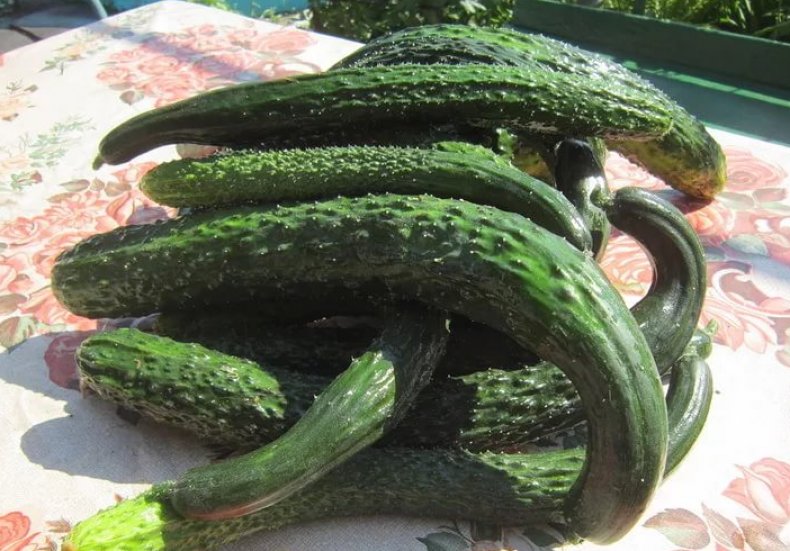
Emerald stream - Ultra-early Crocodile Gene is resistant to typical "cucumber" diseases, including root rot.
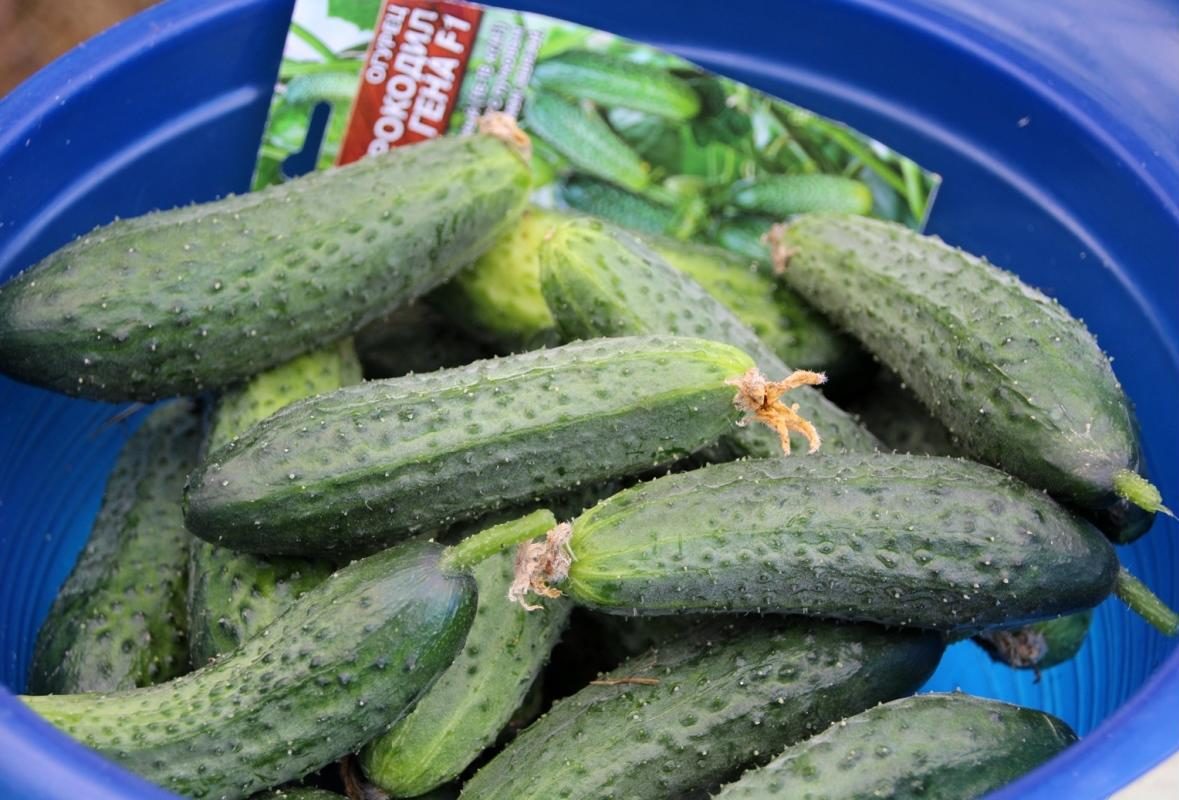
Crocodile Gena
Gherkins Cucumbers
Small-fruited varieties are appreciated by their taste and versatility in use. Especially tasty in canned form.
| Grade | Fetal length (cm) | Cucumber yield (kg per 1 m2) | Self-pollination | Maturation duration (number of days) |
|---|---|---|---|---|
| Pretty boy | 6-8 | 6-8 | + (partially) | 45-55 |
| Quartet | 9-12 | 11 | + | 43-48 |
| Friendly family | 10-12 | 10 | + | 43-48 |
Strong-growing and strong-branched Beauty perfectly resists diseases, abundantly bears fruit. The fruits are fragrant, without bitterness.
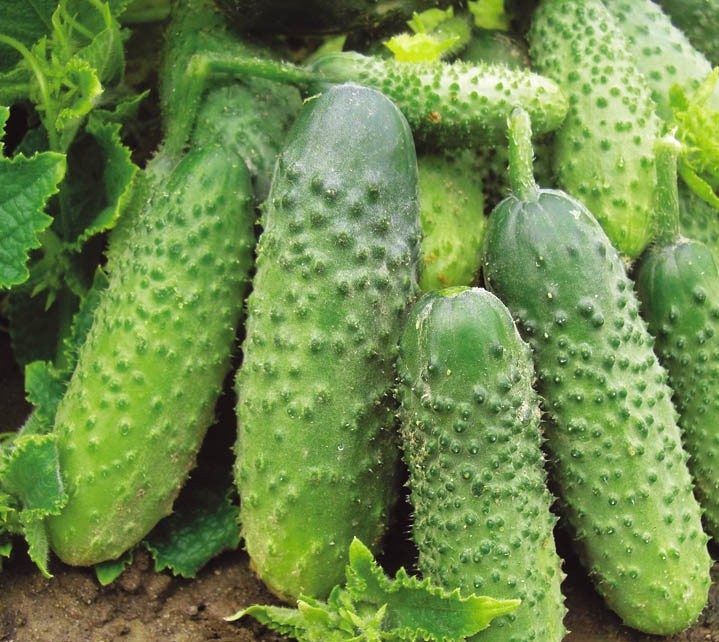
Medium-tall and medium-branched hybrid Friendly family is resistant to the main diseases of cucumbers, gives a good harvest before frost. Recommended collection at the stage of picks.
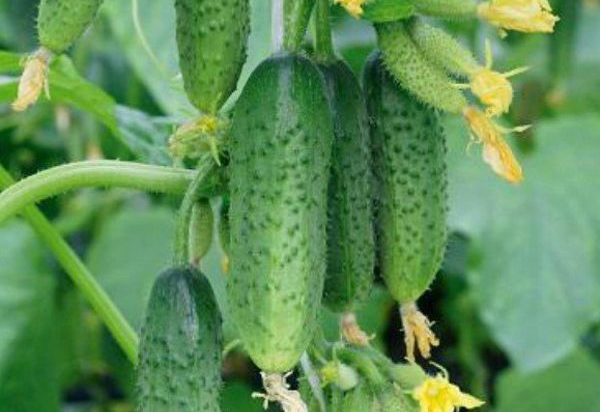
The quartet is a mid-sized, highly branched hybrid. Diseases do not annoy, the fruits are dense, crunchy, without a bitter taste.
Fruit cucumbers
Fruit cucumbers have an excellent sweet taste and are recommended for fresh consumption.
| Grade | Maturity dates (days) | Length (cm) | Self-pollination | Harvesting (kg / m2) |
|---|---|---|---|---|
| Fruit | 42-45 | 12-14 | + | 8 |
| Paganini Fingers | 43-45 | 10-15 | + | 10-12 |
| Sweet woman | 50-55 | 20-22 | — | 12-13 |
Fruit Hybrid - medium-braided, cold-resistant and shade-tolerant, not susceptible to disease, has smooth, crisp and sweet (without bitterness) fruits.
Vigorous and climbing hybrid Paganini Fingers are shade-tolerant, resistant to fungal diseases.
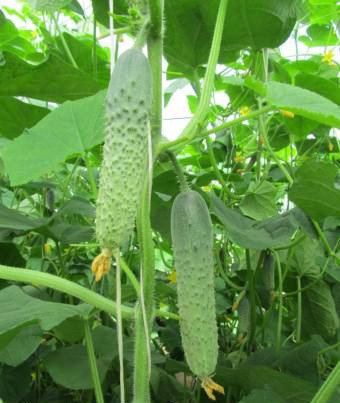
The value of a highly branched hybrid Sweet woman is a delicate and sweet taste. Not affected by powdery mildew, pumpkin scab, cladosporiosis and cucumber mosaic virus.
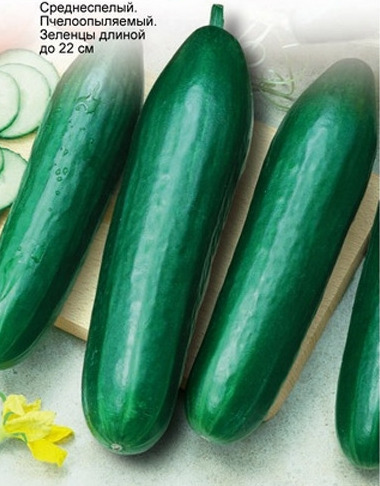
New hybrids
In Siberian greenhouses, new varietal hybrids have proven themselves well, which form several ovaries in one flower and bear a bunch.
| Grade | Self-pollination | Fetal length (cm) | Ripening period (days) | Harvest cucumbers (from 1 m2) |
|---|---|---|---|---|
| Claudia | + | 10-12 | 45-52 | 20 |
| Restina | + (partially) | 5-6 | 45-50 | Up to 25 |
Clammy Claudia has a complex resistance to disease and withstands sudden fluctuations in temperature. The purpose of the variety is universal. Fruits can be harvested daily. The pulp is sweet, juicy, without bitterness.
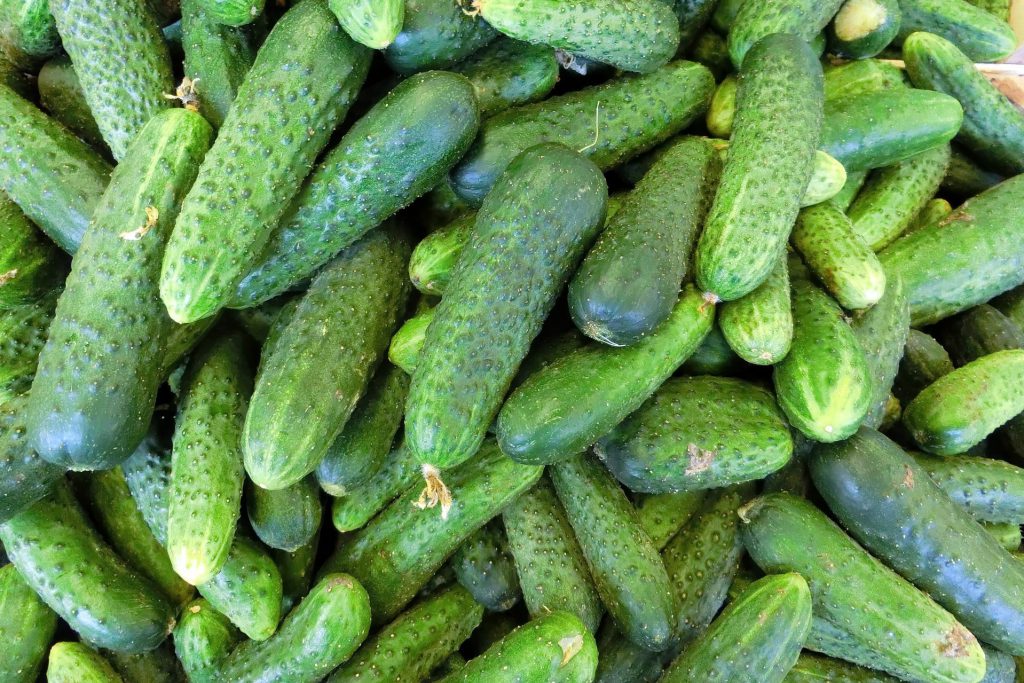
The medium-sized cucumber Restina has genetic resistance to fungal and viral diseases. The dense and crispy texture of the product is suitable for salads and salting.
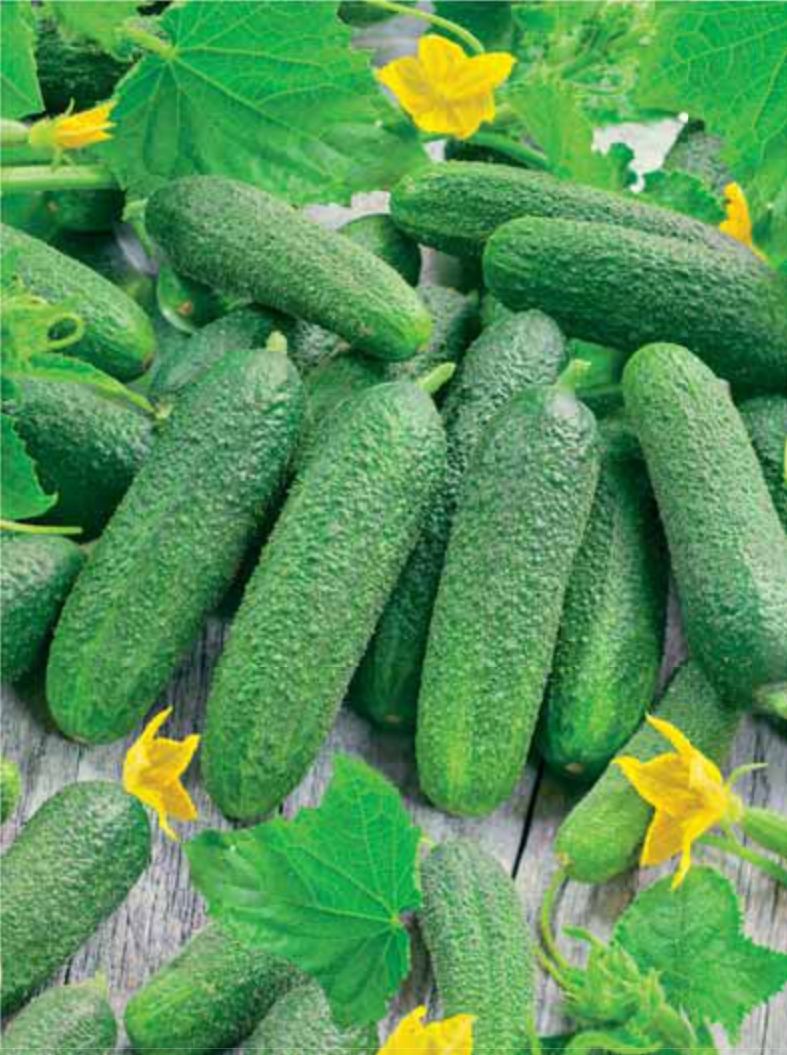
Varieties and features of growing cucumbers in a polycarbonate greenhouse in Siberia
For Siberian polycarbonate greenhouses It is recommended to select reliable and unpretentious varieties, the seeds of which have excellent germination and stress resistance.
The specifics of greenhouses
The main material of such structures (polycarbonate) has cells that retain heat for a long time.It is only important not to allow the temperature limits to be exceeded in the heat by ventilating the greenhouse.
A special composition applied to the surface prevents the penetration of dangerous solar radiation into the greenhouse, but light enters the plants in large quantities. High-quality polycarbonate withstands extreme temperatures and snow loads, providing shelter long service life.
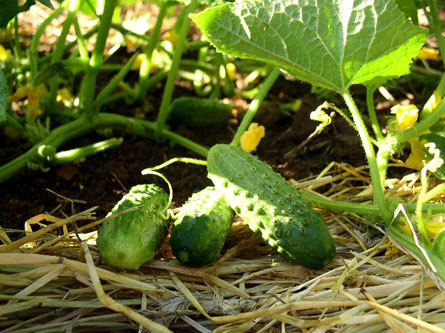 You may be interested in:
You may be interested in:The best varieties
The tall and branched hybrid Miranda adapts well to the fertile greenhouse soil of any composition. It is resistant to frost and powdery mildew. Parthenocarpic variety, and therefore very convenient for growing in polycarbonate vegetable structures. The purpose of the hybrid is universal.
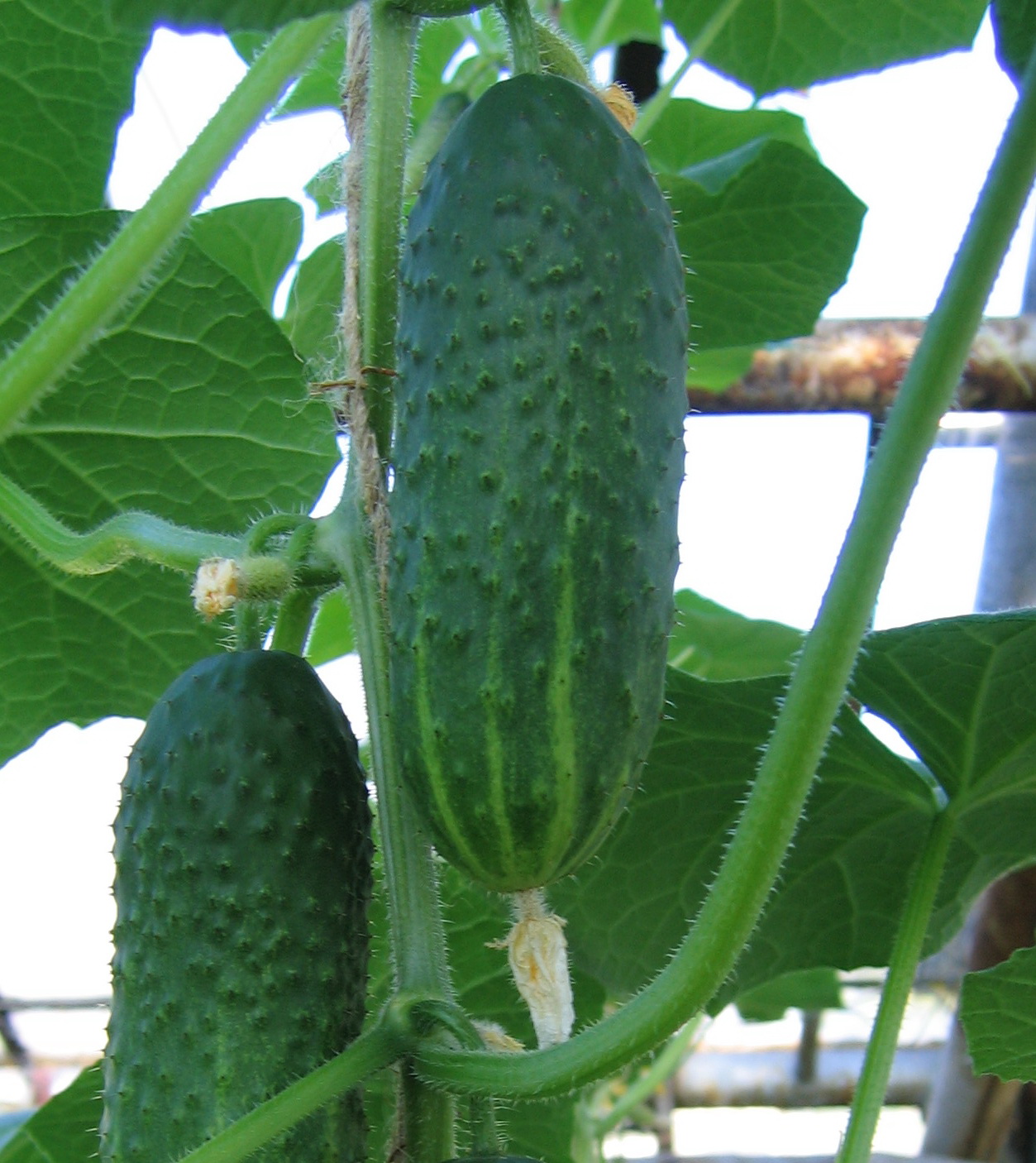
Mid-sized mottled Serpentine allows you to get a quick crop. It withstands short-term temperature drops. Drought and disease resistant. In greenhouse conditions, caring for it is not burdensome.
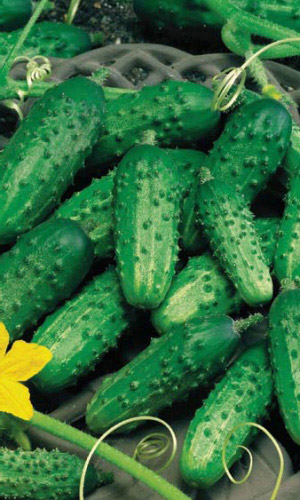
Altai has a short growing season and good cold resistance. Dramatic drops in temperature that an unheated greenhouse can skip do not affect crop yields.
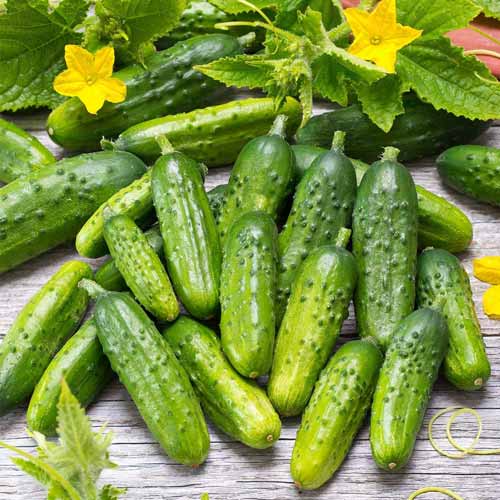
| Grade | Self-pollination | The timing of the onset of ripeness (number of days) | The size of the vegetable in length (cm) | Productivity (kg / m2) |
|---|---|---|---|---|
| Miranda | + | 45 | 11-12 | 6,5 |
| Serpentine | — | 39-42 | 9-10 | 4-5 |
| Altai | — | 35-40 | 9-11 | 3,6-3,8 |
Some secrets to growing cucumbers
In the spring in Siberia, the soil warms up for a long time, so it is better to make high beds for this vegetable crop, so that they are warmed up by the sun's rays from different directions. Bean, onion, cabbage are suitable as precursors for cucumber.
Seeds can be planted in late April-early May and then for 3-4 weeks to grow seedlings for planting in a greenhouse prepared for cucumbers. To protect the root system of young seedlings helps shelter with a layer of mulch.
To use chicken droppings, 1 part of it should be diluted in dry or fresh form in 20 liters of water. After 10 days, you can water the aisles. Apply carefully so that the plants do not get burned. It should not fall onto leaves and holes. It is useful to sprinkle the beds and the plants themselves with wood ash. It is better to do this before watering.
Watering should be frequent but moderate. During prolonged rains, this procedure should be postponed until the soil is completely dry, otherwise even strong plants can get sick. If the topsoil in the aisles has dried up, it must be carefully loosened.
Yellow leaves need to be torn off and destroyed, and seedlings watered for the prevention of Fitosporin. You can also dilute a bottle of iodine in 1 liter of water and spray them with beds.
When harvesting, you need to remove substandard fruits. This is especially important for the regular bearing of small-fruited varieties.
Reviews
Valeria: “The cucumbers of the Claudius hybrid are small and even. They are great for canning. No worse than canned and 10-centimeter fruits of Altai. "
Helena: “For many years we have been growing Zozul. Just 1.5-2 months after sowing, we taste the first cucumbers. There are no bitter ones, even after sudden changes in temperature. Fruits as a selection - no overgrowths, no dwarfs. The only negative is that the seeds of the hybrid must be purchased annually. After all, if you collect "their" seeds, they will not give the desired result. "
Alexander: “Of the different varieties that I tried, I preferred Claudia. Seeds I choose high-quality, processed. Germination is good, almost 100 percent. The door to the greenhouse in warm weather is almost always kept open. "
Augustine: “They tried the Emerald Stream variety.Corresponds to its name, as it grows literally in a stream. The plant is large, so immediately fertilize the soil in the greenhouse. We always tie a powerful vine. In Siberia, fruits appear in late June or early July. Grow fast. Tasty, no bitterness. Because of the spines we use gloves when collecting. ”
Anatoly: “I tried with my wife to grow different varieties in the open field, but the result did not always please us. Therefore, I decided to build a greenhouse of 12 mm polycarbonate. Since the climate here is severe in Siberia, I attached this material in 2 circuits. The air gap between them is 3 mm. They planted the famous universal variety Miranda. Water only with warm water, fertilize well. "
Breeders are constantly developing new varieties, including for the difficult climate of Siberia. Siberians successfully grow many new products. There are also time-tested varieties that annually yield a sustainable crop, especially in a carbonate greenhouse. Long and miniature, sweet salad and crispy pickles - the choice of cucumbers is diverse, so each gardener can choose a honeycomb for growing in Siberia to his taste.

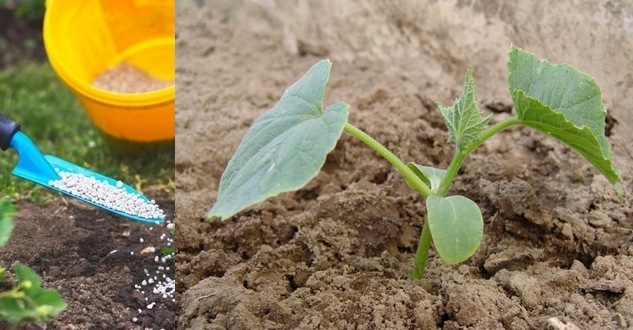
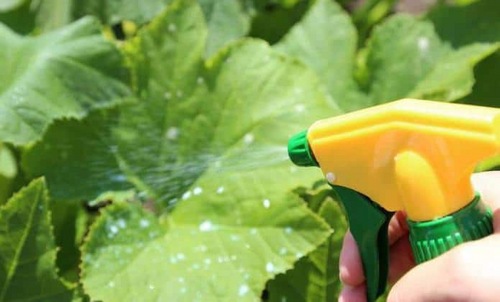
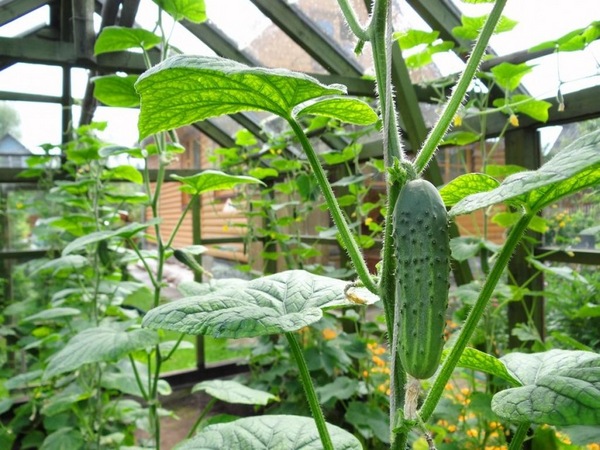
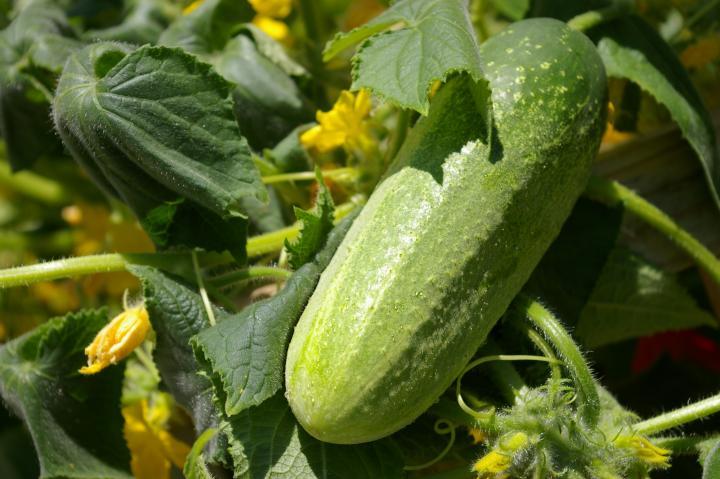
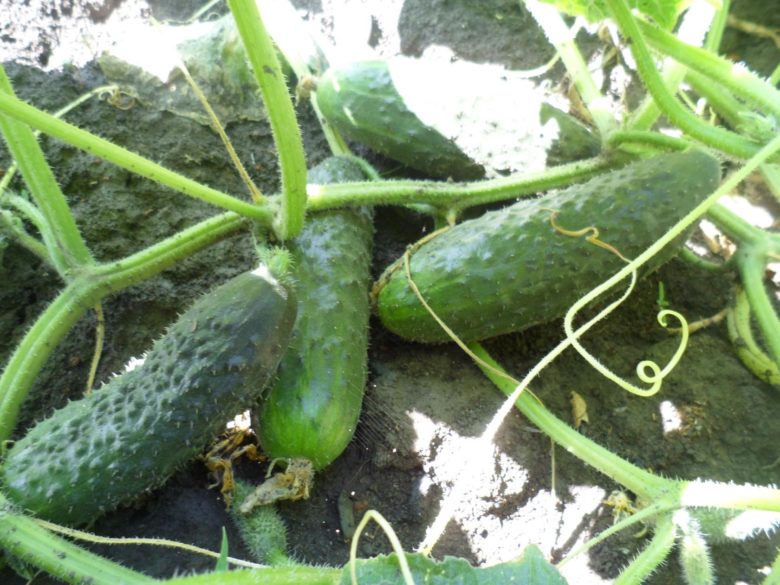
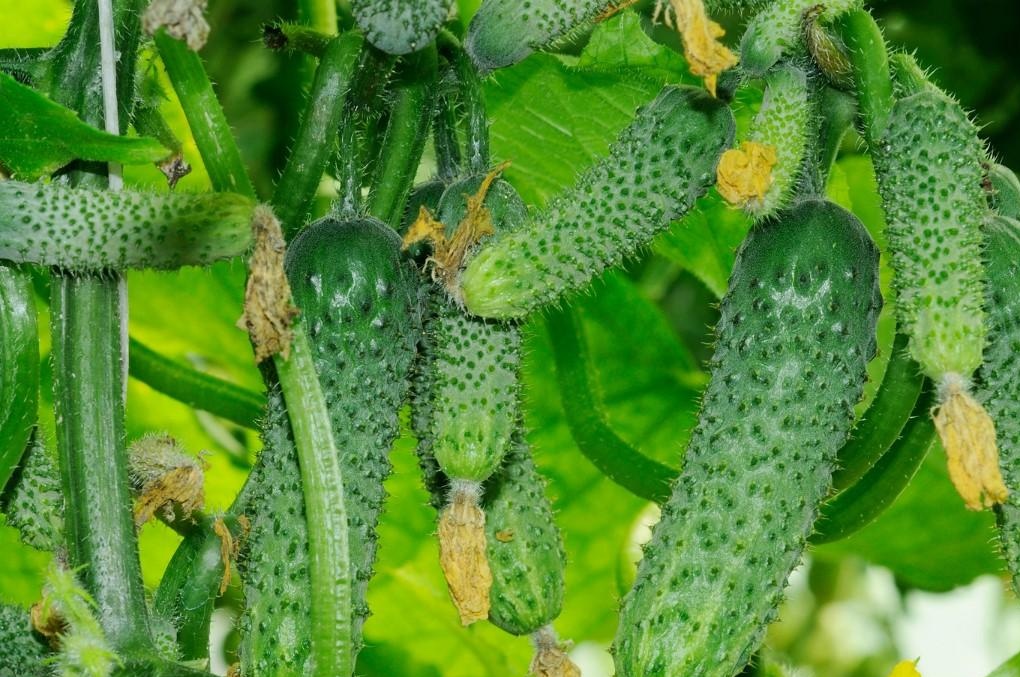
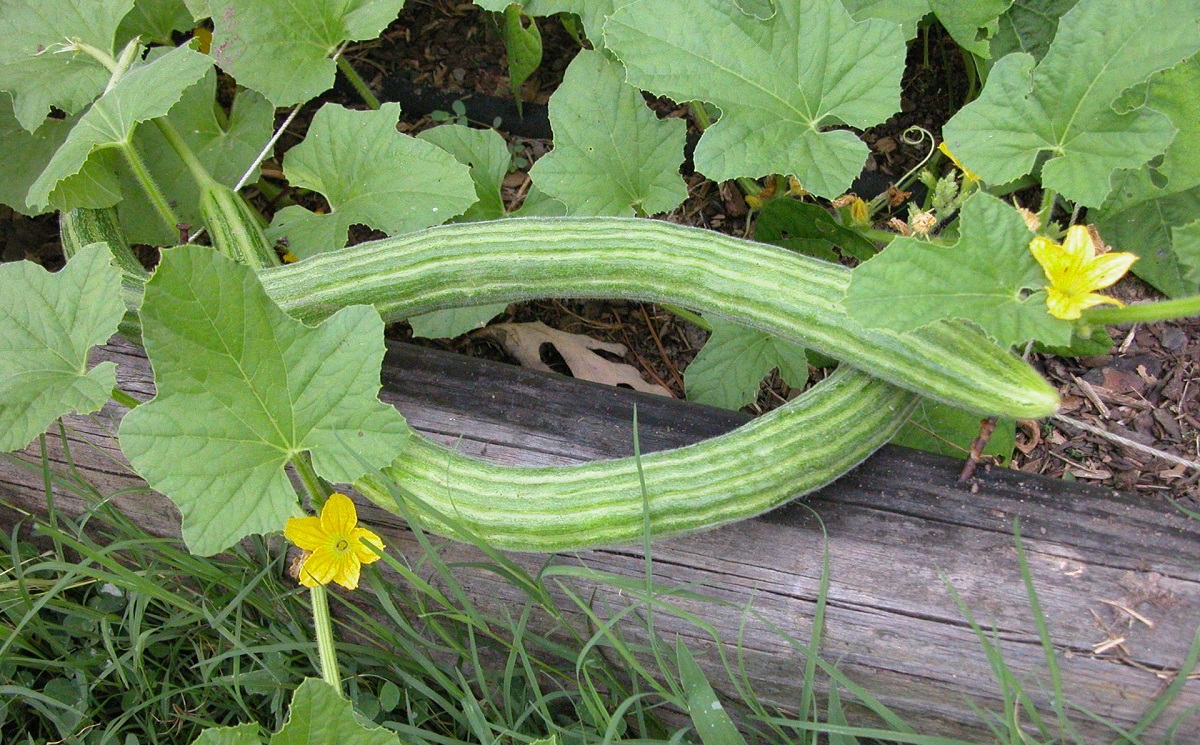 Armenian cucumber with melon flavor: description and characteristics, reviews
Armenian cucumber with melon flavor: description and characteristics, reviews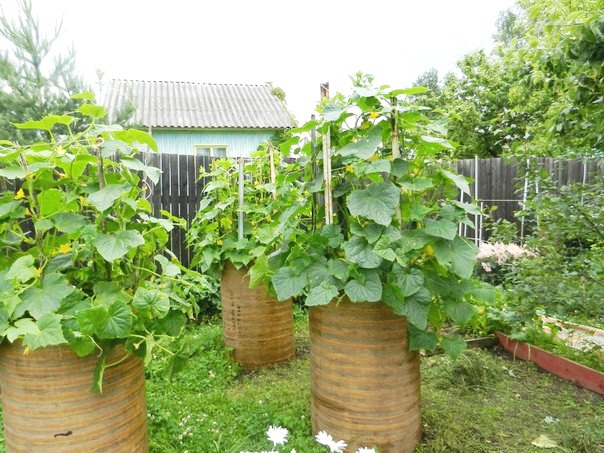 Do-it-yourself vertical beds for cucumbers: schemes, photos
Do-it-yourself vertical beds for cucumbers: schemes, photos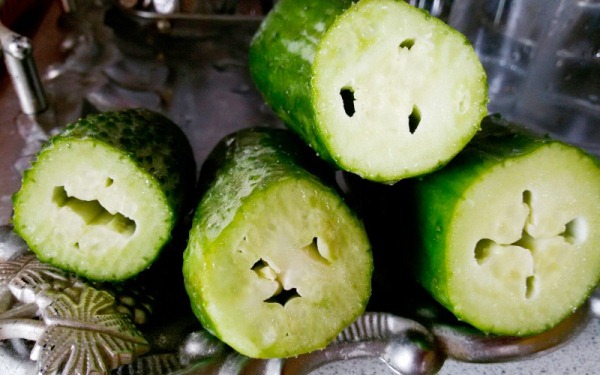 Hollow cucumbers: reasons for the appearance of hollow, what to do
Hollow cucumbers: reasons for the appearance of hollow, what to do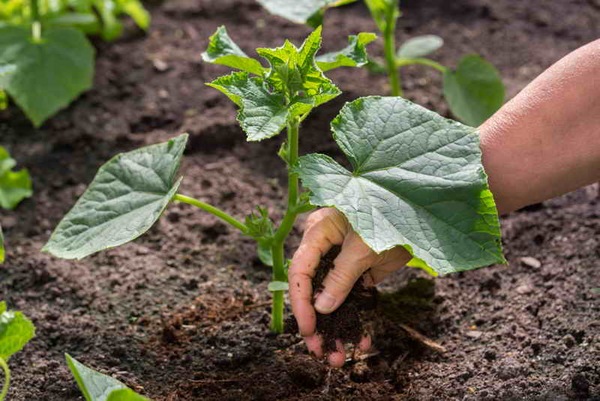 Which manure is best for cucumbers: application, how to breed
Which manure is best for cucumbers: application, how to breed